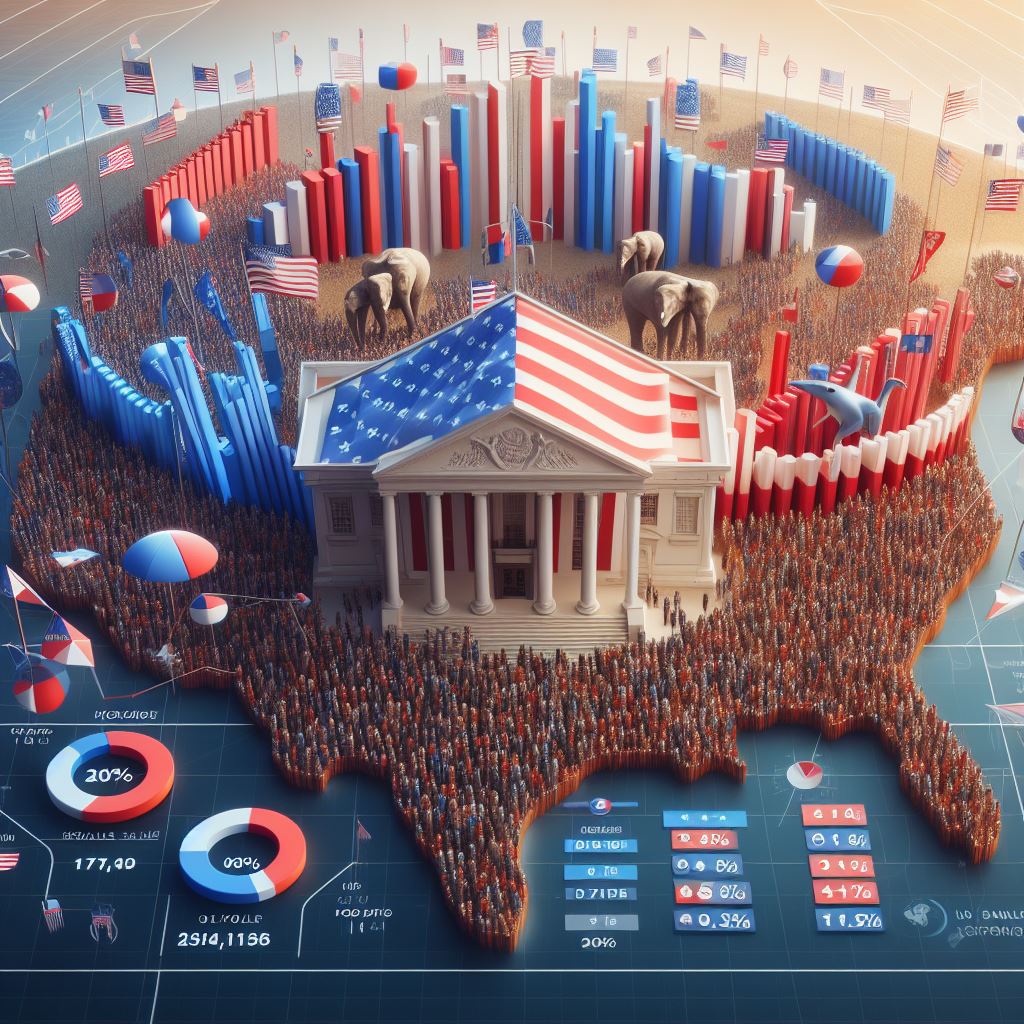As the 2024 election cycle unfolds, the rematch between Joe Biden and Donald Trump has captured national attention. Polls serve as a vital tool in gauging public sentiment, with major national and state polls providing insights into the shifting dynamics of the electoral landscape. This article delves into how the average of major national polls has evolved from January 2024 to the end of March 2024 and examines the trends in key swing states.
National Poll Trends
January 2024 Overview
In January 2024, the race was notably competitive. Both candidates appeared to have consolidated their base support, with national polls indicating a close contest. Biden’s campaign focused on touting the administration’s accomplishments, while Trump’s messaging centered on criticism of Biden’s policies.
Evolution to March 2024
By the end of March 2024, a shift was observable. The average of major national polls showed a virtual tie or Trump with a slight lead. Biden is trending up though, possibly attributed to key legislative successes and a focus on domestic issues that resonated with undecided voters. Meanwhile, Trump faced challenges in unifying the Republican base, as internal party disputes and external controversies slightly dampened his polling numbers.
What’s still unknow is who third party candidates will hurt most.
Swing State Dynamics, Critical Battlegrounds
The major swing states, including Florida, Pennsylvania, Michigan, Wisconsin, Arizona, and North Carolina, have historically played pivotal roles in determining the election outcome. Each state’s unique political landscape offers a nuanced view of the national sentiment.
Trends from January to March 2024
– Florida: Trump maintained a steady lead in Florida, capitalizing on strong support among retirees and Latino voters. However, Biden made modest gains, leveraging local issues and targeted campaigning.
– Pennsylvania and Michigan: These states, part of the “Blue Wall,” showed a slight preference for Biden, with his lead expanding marginally by March 2024. The focus on manufacturing and job creation appeared to sway some undecided voters.
– Wisconsin: Wisconsin remained a toss-up, with both candidates neck-and-neck. The state’s economic concerns and political polarization kept the race extremely close.
– Arizona and North Carolina: In the West and the South, Arizona and North Carolina presented mixed results. While Arizona leaned slightly towards Trump, with some movement for Biden being seen. Reflecting demographic shifts and suburban trends, North Carolina showed a small but consistent preference for Trump, rooted in rural and conservative support.
Where Are We Heading?
The trends from January to March 2024 highlight a dynamic and competitive race between Biden and Trump. While Biden showed incremental gains in national polls and certain swing states, Trump’s base remained robust, particularly in critical areas like Florida and North Carolina. The evolving political landscape, influenced by economic factors, legislative achievements, and campaign strategies, continues to shape the 2024 election cycle, underscoring the importance of closely monitoring these trends as November approaches.
